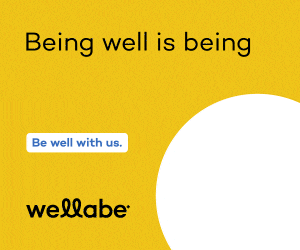Introducing health savings accounts

Central Iowa employers battling high health-care costs will soon have another tool to encourage employees to make better choices about their medical spending, while providing an additional coverage option for their workers. But employees will have to consider carefully whether the new option makes sense for them.
Several Des Moines-based insurance companies, including Principal Financial Group Inc., Wellmark Blue Cross and Blue Shield and Coventry Healthcare of Iowa, are now developing health savings account plans, most of which will be available in time for the companies’ open-enrollment periods for their 2005 plan years.
Health savings accounts, approved by Congress in late 2003 as part of the Medicare Reform Act, are tax-free savings accounts coupled with enrollment in lower-premium, high-deductible health plans. Each year, participants can set aside the full amount of their insurance plan’s deductible in the account with pretax dollars, and access it tax-free through a debit card to cover medical expenses until their deductible kicks in.
The advantages, for those who can afford the out-of-pocket costs, are tax-free interest on the money that doesn’t get used, as well as the ability to roll the money over from year to year rather than the “use-it-or-lose-it” limitation of health reimbursement or flexible spending accounts.
“We’re excited about it,” said Michael Teachout, chief executive officer of Coventry, which plans to introduce a HSA product this fall. Exposing more employees to the true costs of healthcare will create greater transparency in pricing, he said, and ultimately allow his company to better compete with Wellmark, the dominant health insurer in the state.
“We think the employer will start looking at the costs of healthcare – and ultimately the providers will level the playing field on reimbursements (paid by the insurance companies),” he said.
Wellmark, which plans to introduce its HSA plan on July 1, says the concept is receiving a lot of interest from its current group insurance customers.
“We have at least a couple of large group customers saying pretty strongly that they plan to offer it to their employees,” said Sue Brownlee, Wellmark’s product management and design manager for HSAs.
Because all sizes of employer group plans as well as individual plans will qualify to set up accounts, Wellmark expects enrollment in HSAs to easily outstrip the weak adoption rate that medical savings accounts saw, Brownlee said. The MSAs had been limited to individual plans and plans for fewer than 50 employees.
“Even if you can get 10 percent participation, you’re going to end up with more enrollees just because of the number of employees involved,” she said.
The new plans may also offer an alternative to people who have been hesitant about putting money into flexible spending accounts because they feared losing the unused portion, said Jerry Ripperger, Principal’s product director for HSAs.
Additionally, “if these qualified plans are significantly less expensive and the employer can pick up most of the cost, it can actually make the risk pool better,” he said. “There are a lot of people who opt out of the plans now (who are young and healthy). They have self-selected out; by bringing them back in you’re improving the overall risk.”
Even if those people aren’t savers and can’t be persuaded to put money into an account, they may still want to enroll in a lower-premium plan, he said.
Health savings accounts will also provide a new coverage opportunity for sole proprieters and people who have more than a 2 percent ownership in Subchapter S corporations, who under federal tax law are prohibited from participating in the flex spending or health reimbursement accounts they offer their employees.
“Particularly, small employers are going to look at this,” Ripperger said. “That sole proprieter or partner doesn’t get a lot of breaks to do something pretax.”
Wells Fargo & Co., which earlier this month introduced a health savings account plan in partnership with Health Partners in Minnesota, plans to roll out a product nationally by July 1.
“We had really been holding off on a general release of the product until all the regulations had come out,” said John Reynolds, senior vice president and business director for Wells Fargo Institutional Trust Services in Minneapolis. “We anticipate some of the regs still coming out in June.”
Wells Fargo anticipates that initial response to health savings accounts will be between 3 and 5 percent of the total market, he said.
“There are some that are thinking it’s going to be more aggressive than that,” Reynolds said. “We’re tending to be more conservative in our planning. We see that beyond 2005 those penetration rates will go up, above 5 percent. That’s why you see a lot of the insurance companies scrambling right now to come up with a product or to partner with a financial services partner, to be in time for the open enrollment period for 2005.”
As health-care costs continue to escalate at double-digit rates, more companies will switch to high-deductible health plans to curb their costs, Reynolds said. “So they are looking at how they can offer these HSAs to give the employees an investment option and some tax advantages.”
In a national survey of employers conducted by benefits consultant Watson Wyatt & Company Holdings, reducing overall health plan costs was the most frequently cited reason for implementing consumer-directed plans such as HSAs. Twenty-four percent of respondents said reducing costs was their primary reason for offering a plan, while 22 percent said they wanted to increase their employees’ price sensitivity to health-care decisions.
“Admittedly, there are some people for whom this is a better option than others,” Brownlee said. “You need to have enough disposable income to fund the health savings account itself. For the average person, there’s not going to be enough savings on the premium side to fund the account. But I think there is a certain market for whom this is very attractive. The best-case scenario would be to get 20- and 30-year-olds to think about health savings accounts the same way that 40-year-olds think about 401(k)s. Whether that happens or not I think is sort of a wild card at this point.”
One of the keys to making the plans successful will be how well the industry can clearly explain them to business owners and their employees, Ripperger said.
“I think it’s a marketing challenge for the industry. You walk a line here between marketing and education. And to me, it’s more about education than marketing. I don’t want to market a plan to you; I want to educate you and make sure you’re getting the best plan for your circumstances.”







